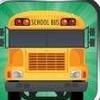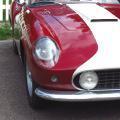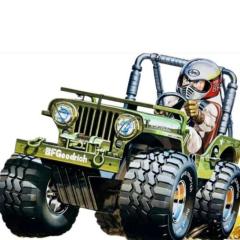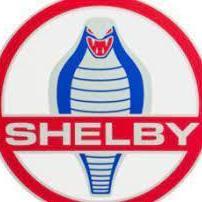-
Posts
9,217 -
Joined
-
Last visited
peteski's Achievements

MCM Ohana (6/6)
-
To each his own. I didn't find that to be a problem for me, but it seems we now live in instant gratification times. We want it ready yesterday. Actually Testors enameled didn't take very logn to dry for handling, but as with any other enamel paint, they take much longer time to fully cure hard. That is how enamel paints work. I don't sand or polish my models, so I have no issues with the paint taking longer to harden. If you are old enough, all we (the modelers) had back in the day were plastic compatible hobby enamels from Testors and Pactra. We all dealt with them without complaints about the hardening times. Momin is a new modeler. I think he would be ok going with the the basics before doing any advanced modeling. As I see it, none of us started as (or ever became) instant award-wining modelers.
-
Another vote for Tamiya (Washi) tape instead of the hardware-store masking tapes which are made for masking large things like walls in a house. Yes, per foot it is pricier than generic tapes, but it is much thinner, more pliable, and has a less aggressive adhesive to make it easier to remove from a model. I'm also not sure why so many modelers recommend the Frog Tape. Frog tape is just a regular masking tape with its edges coated with a substance which swells up to seal the edge when exposed to water from acrylic/latex house paints. Not something that is beneficial in painting models. Other than that Frog tape is just another tick and stiff tape. Well, except I just recently found out that Frog tape is also now available as a Washi type tape which is similar to Tamiya tape, but the water-expanding seal is not very useful for painting model cars. Don't get me wrong, I still use standard "blue" masking tape for covering larger areas, but the edges of the masked area will be done using Tamiya (or other types) of Washi tape. I also don't understand the aversion to Testor's paints which were designed for model kits. Perfect for someone starting to build models. That is how majority of my models were painted. Testors enamels. But I have not used those paints for some years and there seem to be lots of online complaints about the quality of those paints due to some change in their chemical formula. I don't know how true that is and if the problem is with the paint itself or the painting techniques of the modelers, so I can't really say "yes" or "no" for using Testor's paints. The only thing is that Testors enamels I used did take a long time to fully harden. They would probably be ok for someone who is just starting and does not use the esoteric paints many now use for painting plastic models.
-
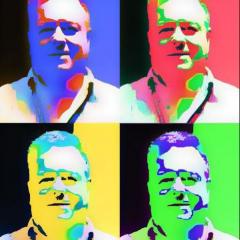
The new Charger
peteski replied to Jon Haigwood's topic in General Automotive Talk (Trucks and Cars)
I guess my eyes and brain picked up the similarity. Thanks! -
Do her emails get bounced back (as undeliverable) to her, or do they just vanish? Outlook is likely just a mail reader program on your computer. Who is your email provider (the part of your email address after the @ sign)? Do you use any of the free email accounts like Yahoo, Gmail, Hotmail, etc.
-

A Sad Situation
peteski replied to Falcon Ranchero's topic in General Automotive Talk (Trucks and Cars)
Looks like it has the (in)famous HT4100 (4.1l V8) engine. Same as my '85 Eldorado. Hopefully by 1985 many of the original issues with that engine have been resolved. -

The new Charger
peteski replied to Jon Haigwood's topic in General Automotive Talk (Trucks and Cars)
I was not aware of the other car. Still, doesn't change my opinion - to me both have some De Lorean flavor in them. -

The new Charger
peteski replied to Jon Haigwood's topic in General Automotive Talk (Trucks and Cars)
That Hyundai looks like bad copy of De Lorean with lots of "stuff" tacked on. All those black "ground effects" look like some newbie modeler customized a model kit of a De Lorean by adding some unrelated parts from other kits. I also don't understand that black (pseudo air inlet?) "thing" on the rear quarters. It ruins the otherwise decent lines of the car. I guess my mind doesn't work like today's 20- and 30-something car designers. -
Neither excuse seems to apply (crappy plastic kit carburators are neither good or cheap nowadays). And as far as resin goes, what specific type of a problem have you experienced with resin parts? Polystyrene is also a type of resin you know. And while the Fireball's carbs do look like they are cast from polyurethane resin , I bet dollars to donuts that the master pattern is 3D printed. Those have way too fine level of detail to be scratchbuilt by someone. Their bases even show artifacts of 3D printing.
-

Software to create decals
peteski replied to Mike 1017's topic in Model Building Questions and Answers
Best decal design software is vector based (with a capability to also include bitmaps). Vector graphics (which are type of CAD type drawings) are much easier to manipulate and will not lose resolution if manipulated. Photoshop (and freeware GIMP) are mainly bitmap manipulation apps, so while they can be used to produce decal artwork, they are not optimal. Here is a brief AI generated (but accurate) definition of both formats: Vector graphics use mathematical equations to create lines and curves, which allows them to be scaled infinitely without losing quality, making them ideal for logos and illustrations. In contrast, bitmaps are made of pixels and are resolution-dependent, so scaling them up results in pixelation or blurriness -
I should have also mentioned that while the technique and results are excellent, I am confused by the "Photo Etch Step Pads" subject line. When I brought up the thread I expected some photoetched metal step pads, but the only photoetched thing is a saw blade used as a shaping tool for the plastic steps. "Simple and easy technique for making step pads" would have IMO been more descriptive.
-

LA Awesome for chrome removal
peteski replied to gpal's topic in Model Building Questions and Answers
The residue is likely the gloss clear coat applied to the parts before the metalizing process to produce a mirror-smooth surface. You can try immersing the parts in the LA Awesome for more time (the plastic should not be affected), or try some other stripping liquid (like CSC or the Purple Stuff). -

Can this be cleaned up
peteski replied to junkyardjeff's topic in Model Building Questions and Answers
That is strange. Maybe the yellowing was due to sunlight (UV) exposure and it also affect the clear plastic? I agree that likely the best way to try repairing it will be to use some sort of abrasive method others mentioned, and maybe give it a final coat of Future floor finish (or whatever that stuff is called now, or one of its equivalents). -

Software to create decals
peteski replied to Mike 1017's topic in Model Building Questions and Answers
The ancient Alps MD-5000. There is a online group for Alps owners with about 2400 members. I'm one of the groups owners. https://alps.groups.io/g/ALPS/ -
Excellent technique! Simple and very effective.
-

Can this be cleaned up
peteski replied to junkyardjeff's topic in Model Building Questions and Answers
I'm curious as to how the fogging happened. Going by the shape of the fogged area of the "glass" it seems to have been removed from an assembled model and only and only the the exposed "glass" area got damaged. Could it have just been sprayed with Dullcote? It wouldn't have fogged up like that just by itself.

.thumb.png.e64ca4fead948adbdf6a111229b6cf2f.png)
